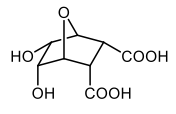Hey, everyone. So in this video, we're going to talk about addition reactions of furane. Now we're going to say that pyrrole, furane, and thiophene can be considered as butadiene bridged by a heteroatom. Butadiene, so we have 1, 2, 3, 4 carbons, so buta and there's 2 double bonds, so that's a diene. We're going to say a five-membered heterocycle's ability to react like a diene depends on how aromatic it is.
Now, the relationship is, heterocyclic aromatic resonance stability is going to decrease as it decreases when the heteroatoms' electronegativity increases. So if we're taking a look here, we have aromaticity that's increasing as you go this way, and then we have electronegativity that increases this way. Notice the opposite relationship that these two have, the inverse relationship. As our aromaticity goes up, the electronegativity of the heteroatom is going down. So if we take a look here, we'd say that, in terms of electronegativity, sulfur would have the lowest one, followed by nitrogen, and then oxygen would be the most electronegative.
So from what we can see here, that as the electronegativity is increasing, furane with the most electronegative heteroatom, oxygen, but it has the lowest aromaticity. And thiophene sulfur, although it's the least electronegative of the 3 heteroatoms, would have the highest level of aromaticity. So, it would react very differently from furane. Alright. So just remember this inverse relationship between aromaticity and the electronegativity of the heteroatom.



